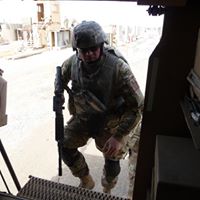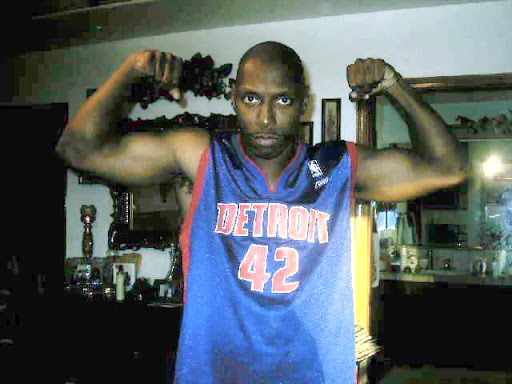Archie N Johnson
age ~71
from Conway, SC
- Also known as:
-
- Archie Etal Johnson
- Archie B Johnson
- Archie D Johnson
- Archie H Johnson
- Andrew Johnson
Archie Johnson Phones & Addresses
- Conway, SC
- Myrtle Beach, SC
- Phoenix, AZ
- 1107 48Th Ave N, Myrtle Beach, SC 29577 • 8434498154
Work
-
Company:Superior car wash systems inc
-
Address:2831 W Weldon Ave, Phoenix, AZ 85017
-
Phones:6022488943
-
Position:President
-
Industries:Service Establishment Equipment and Supplies
Us Patents
-
Sidetrack Vehicle Washer With Rotating Spray Arm
view source -
US Patent:7100621, Sep 5, 2006
-
Filed:May 8, 2003
-
Appl. No.:10/431732
-
Inventors:Archie L. Johnson - Phoenix AZ, US
-
Assignee:Superior Investments, Inc. - Phoenix AZ
-
International Classification:B08B 3/02
-
US Classification:134123, 134113
-
Abstract:A vehicle washing apparatus includes a side track extending along a washing bay. A gantry is supported for reciprocal motion along the side track by a gantry motor. Sensors detect the front and rear ends of the vehicle to control movement of the gantry. A retractable carriage extends from the gantry across the washing bay under the control of a carriage motor and a vehicle width sensor. The carriage rotatably supports a spray bar for discharging cleaning fluid. A motor rotates the spray bar to sweep around corners of the vehicle. A cam plate and engagement roller index the spray bar orientation, while limiting spray bar rotation to a single direction. A wheel guide receives the front left vehicle wheel. Treadle switches in the wheel guide, in conjunction with an illuminated display, indicate to the user when the vehicle is properly indexed in the washing bay.
-
Vehicle Dryer With Butterfly Inlet Valve
view source -
US Patent:8011114, Sep 6, 2011
-
Filed:Dec 4, 2009
-
Appl. No.:12/631042
-
Inventors:Archie L. Johnson - Phoenix AZ, US
-
Assignee:Superior Investments, Inc. - Phoenix AZ
-
International Classification:F26B 25/00
-
US Classification:34413, 34497, 34666, 34220, 454234, 454235, 15 2, 15302, 165292, 239 8, 392384, 392385, 62244, 62258
-
Abstract:A vehicle dryer includes an energy-conserving rotatable inlet butterfly valve to selectively admit or block air to a fan encased in a blower housing. The valve includes a plate mounted on a shaft that extends across the inlet portion of the blower housing. The plate is rotated by its shaft to either an opened position for admitting air into a blower housing, or a closed position for blocking air from entering into the blower housing. A crank arm is coupled to the valve shaft, and a pneumatic cylinder includes a piston rod for turning the crank arm through a ninety-degree angle, thereby rotating the valve plate between its opened and closed positions.
-
Vehicle Dryer With Butterfly Inlet Valve
view source -
US Patent:8397401, Mar 19, 2013
-
Filed:Aug 22, 2011
-
Appl. No.:13/214927
-
Inventors:Archie L Johnson - Phoenix AZ, US
-
Assignee:Superior Investments, Inc. - Phoenix AZ
-
International Classification:F26B 25/00
-
US Classification:34406, 34666, 392385, 15302, 165292, 62258
-
Abstract:A vehicle dryer includes an energy-conserving rotatable inlet butterfly valve to selectively admit or block air to a fan encased in a blower housing. The valve includes a plate mounted on a shaft that extends across the inlet portion of the blower housing. The plate is rotated by its shaft to either an opened position for admitting air into a blower housing, or a closed position for blocking air from entering into the blower housing. A crank arm is coupled to the valve shaft, and a pneumatic cylinder includes a piston rod for turning the crank arm through a ninety-degree angle, thereby rotating the valve plate between its opened and closed positions.
-
Dual Port Air Blower For Drying Vehicles
view source -
US Patent:60000953, Dec 14, 1999
-
Filed:Aug 6, 1998
-
Appl. No.:9/130413
-
Inventors:Archie L. Johnson - Phoenix AZ
-
Assignee:Superior Investments, Inc. - Phoenix AZ
-
International Classification:A47L 902
-
US Classification:153161
-
Abstract:A dual port blowing device for drying a vehicle includes a centrifugal fan powered by a blower motor. The centrifugal fan is rotated upon the motor shaft and surrounded by a housing having a first outlet nozzle for discharging air toward the rear end of the vehicle, and including a second outlet nozzle for discharging air toward the front end of the vehicle. A pivoting damper moves between a first position for sending discharged air through the first outlet nozzle, and a second position for sending discharged air through the second outlet nozzle. An actuator selectively pivots the damper between its first and second positions. The actuator includes a hydraulic cylinder and piston for pivoting the damper. Control circuitry determines when the rear of the vehicle is proximate to the dual port blowing device, and operates the hydraulic cylinder to move the damper from its first position to its second position.
-
Self-Return Mechanism For Car Wash Hose Boom Swivel Assembly
view source -
US Patent:44561776, Jun 26, 1984
-
Filed:Sep 29, 1982
-
Appl. No.:6/428313
-
Inventors:Archie L. Johnson - Phoenix AZ
-
International Classification:B05B 1506
-
US Classification:239209
-
Abstract:A self-return mechanism for a car wash hose boom swivel assembly includes a cam and a cam follower assembly which counteracts a force caused by the drooping of a flexible hose that extends from an end of a hose boom arm to a spray wand positioned in a wand holder that is attached to a side wall of a car wash bay near an open end thereof. The self-return mechanism returns the hose boom arm to a position such that the drooping portion of the hose is held out of the path of a vehicle as it moves into the bay. If the hose boom arm is within a predetermined 90. degree. arc, the cam follower mechanism produces a self-returning force on the hose boom swivel assembly, but if the hose boom arm is outside of the 90. degree. arc, the swivel assembly rotates without being subjected to any such self-returning force.
-
Car Washing Method And Apparatus
view source -
US Patent:41949234, Mar 25, 1980
-
Filed:Jul 14, 1978
-
Appl. No.:5/924797
-
Inventors:Archie L. Johnson - Phoenix AZ
-
International Classification:B08B 700
-
US Classification:134 6
-
Abstract:Method and wrap around car wash apparatus are disclosed for maintaining uniform crush pressure of a rotary brush against a predetermined surface area of an advancing vehicle. A constant counterclockwise torque is produced on an outer arm by means of a rotating gear connected to the outer arm and a rack driven by a first pneumatic cylinder. After the rotary brush passes around the front edge of the vehicle, an inner arm pivotally connected to a support and the outer arm rotates counterclockwise until a maximum knuckled relationship between the inner and outer arms is attained. As the rotary brush, rotating clockwise, passes around the rear of the vehicle, the rotary brush bites into the rear corner producing a reaction force which causes the inner arm to be forced counterclockwise against a compression spring. The compression spring then boosts the inner arm in the clockwise direction, causing the rotary brush to be pushed into the rear end of the vehicle. The inner arm is then rotated clockwise to push the rotary brush against the rear end of the vehicle as the outer arm rotates counterclockwise, passing the rotary brush along the rear end of the vehicle.
-
Dual Axis Suspension For Car Wash Wrap Brush
view source -
US Patent:57155585, Feb 10, 1998
-
Filed:Apr 24, 1996
-
Appl. No.:8/637202
-
Inventors:Archie L. Johnson - Phoenix AZ
-
Assignee:Superior Investments, Inc. - Phoenix AZ
-
International Classification:B60S 306
B08B 700 -
US Classification:15 533
-
Abstract:A wrap brush assembly includes an elongated, horizontal upper support arm which pivots from an overhead support about a vertical axis. A pivot link is pivotally connected to the free end of the upper support arm about a horizontal pivot link axis for movement forward and rearward relative to the path traversed by a vehicle to be cleaned. A brush support bracket is pivotally connected to the lower end of the pivot link about an axis lying perpendicular to the pivot link axis for allowing the brush support bracket to swing side to side relative to the path traversed by a vehicle to be cleaned. A motor, brush shaft, and wrap brush are supported from the brush support bracket. A shock absorber dampens forward/rearward movement about the horizontal pivot link axis, and a stop limits inward pivoting movement of the brush support bracket relative to the pivot link to prevent the wrap brush from climbing onto the rear deck of the vehicle. The overhead support includes a horizontal support beam bridging the path traversed by the vehicle to be cleaned; the vertical axis about which the upper support arm pivots is displaced away from the horizontal support beam, and such vertical axis and the brush extend on opposite sides of the horizontal support beam.
-
Oscillating Air Blowers For Drying Vehicles
view source -
US Patent:53677390, Nov 29, 1994
-
Filed:Jul 13, 1993
-
Appl. No.:8/090772
-
Inventors:Archie L. Johnson - Phoenix AZ
-
International Classification:F26B 500
-
US Classification:153161
-
Abstract:A vehicle drying blower assembly includes a series of oscillating centrifugal fans each powered by a blower motor. Each centrifugal fan includes a circular fan rotated upon a driveshaft and surrounded by a housing having a discharge nozzle; the housing that surrounds the circular fan is supported by a rocker arm for pivotal movement about an axis of rotation coaxial with the circular fan driveshaft. The rocker arm pivots about a bearing assembly that lies coaxial with the driveshaft of the blower motor. A drive motor rotates an eccentric crank arm, and link rods coupled between the eccentric crank arm and the housing rocker arms simultaneously oscillate each centrifugal fan to blow moisture from the vehicle.
Resumes

Vice Presidente
view sourceWork:
Wakeupproductions.com
Vice Presidente
Vice Presidente

Archie Johnson
view source
Archie Johnson
view source
Archie Johnson
view source
Archie Johnson
view source
Archie Johnson
view source
Archie Johnson
view sourceLawyers & Attorneys

Archie Johnson - Lawyer
view sourceISLN:
900167704
Admitted:
1984
University:
University of Tennessee, B.S., 1977
Law School:
University of Tennessee, J.D., 1984
Name / Title
Company / Classification
Phones & Addresses
President
Superior Car Wash Systems Inc
Service Establishment Equipment and Supplies
Service Establishment Equipment and Supplies
2831 W Weldon Ave, Phoenix, AZ 85017
Website: superiorcarwash.com
Website: superiorcarwash.com
Owner
Myrtle Beach Biblical Counsel
Individual and Family Social Services
Individual and Family Social Services
1107 48Th Ave N # 310D, Myrtle Beach, SC 29577
Website: drarchie.com
Website: drarchie.com
Owner
Wash World Car Wash
Carwash
Carwash
3550 W Dunlap Ave, Phoenix, AZ 85051
Owner
Carwash Express
Carwash
Carwash
9215 N 7 St, Phoenix, AZ 85020
President
SUPERIOR INVESTMENTS, INC
1016 E Desert Cv Ave, Phoenix, AZ 85020
Owner
Myrtle Beach Biblical Counsel
Other Individual & Family Svcs
Other Individual & Family Svcs
1107 48 Ave N #310D, Myrtle Beach, SC 29577
8434498154, 8434498753
8434498154, 8434498753
Director
Myrtle Beach Biblical Counseling
Individual/Family Services
Individual/Family Services
1109 48 Ave N, Myrtle Beach, SC 29577
8434498154
8434498154
Principal
Archie Johnson PH.D. Mbbc
Individual/Family Services
Individual/Family Services
1107 48 Ave N, Myrtle Beach, SC 29577
Myspace

Archie Johnson
view source
Archie Johnson
view source
Archie Johnson
view source
Archie Shirley Johnson
view source
Archie L. Johnson
view source
Archie Lee Johnson
view source
Archie Kevin Johnson
view source
Archie Johnson
view sourceGoogleplus

Archie Johnson
About:
I went to Soldan high , Worked as an Iron Worker, radio announcer,Machine opperator and.Singer From The 314

Archie Johnson

Archie Johnson

Archie Johnson

Archie Johnson

Archie Johnson

Archie Johnson

Archie Johnson
Youtube
Plaxo

Archie F. Johnson
view sourceTrenton N.J.Hello Everyone:
I am a fairly simple person that loves Cook Outs & Watching Sports as well as drinking with my family and friends. My dream is to own a... Hello Everyone:
I am a fairly simple person that loves Cook Outs & Watching Sports as well as drinking with my family and friends. My dream is to own a club some day and also try to get the movie me & my brother wrote on the big screen or in video stores.

Archie Johnson
view sourceUSA, CA

archie ann johnson
view sourceFDIC
Flickr
Classmates

Archie Johnson
view sourceSchools:
Amanda Elzy High School Greenwood MS 1981-1985
Community:
Melvin Jenkins

Archie Johnson
view sourceSchools:
Sadie V. Thompson High School Natchez MS 1964-1967
Community:
Mary Ford, Emma Henderson, Christine Burns, Lynder Kelley, Sylvester Johnson, Tommy Tyler

Archie Johnson
view sourceSchools:
Columbia High School Columbia MS 1987-1991
Community:
Shirley Jefferson, Steven Baughman

Archie L. Johnson
view sourceSchools:
Crestwood High School Chesapeake VA 1961-1965
Community:
Johnny Clemons, Chester Cuffee, Vivian Porter, James Holmes, Jasper Banks, Edward Adams

Archie Johnson
view sourceSchools:
Soldan/Blewett High School St. Louis MO 1959-1963
Community:
Michael Wilkinson, Tyrone Allen, Sheron Brockmiller, Lloyd Weathersby, Glenda Bullinger

Archie Johnson
view sourceSchools:
Golden High School Golden Saudi Arabia 1967-1968
Community:
Sally Kempston, Lorraine Zeck, Bryan Snider, Carole Christie, Raymond Simonson

Archie Jones (Johnson)
view sourceSchools:
Eastman High School Enfield NC 1975-1979
Community:
Chas Batts, Devetta Thomas, Wanda Pittman, Greg Harris, Christopher Alston, Melissa Jones, Kelly Jones, Sandra Mcneil, Kevin Smith, Frederick Silver, Cathy Johnson

Archie Johnson | New Dime...
view sourceGet Report for Archie N Johnson from Conway, SC, age ~71



















